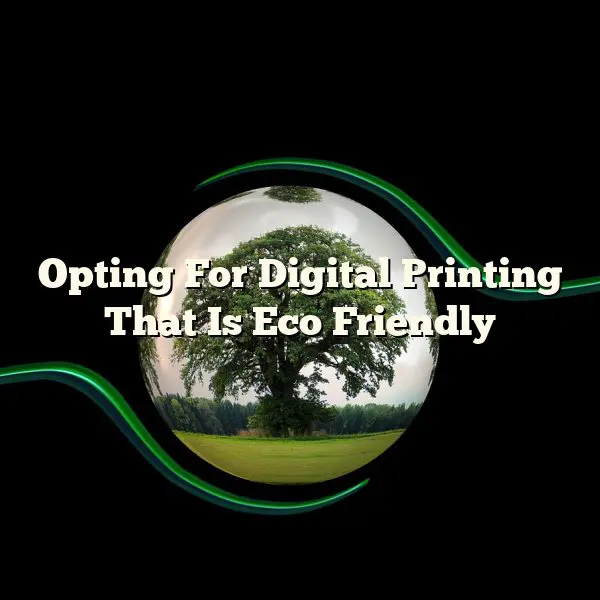The whole process of printing has undergone a major transformation in a relatively short period of time. With the invention of digital presses, there is the option of using a computerized process instead of an industrial one. This has eliminated much wastage of resources, time and energy. Choosing to use digital printing that is eco friendly takes this a step further.
Offset printers use plates photo-engraved with text and images. Ink is rolled onto the plate and the image is then transferred onto rubber blankets. From there it is transferred onto the paper to produce top quality prints. However, there is much wastage of time, energy and resources involved in the process. For example, it takes time and much wastage of paper to get the presses ready for a print run. Liquid and solid waste as well as fumes are produced as by products requiring special disposal methods.
The new technology does not require plates, eliminating many problems. Chemical usage and hazardous waste are significantly reduced. More personalization is possible and turn around times are faster. The process is particularly suited for items like business cards, letterheads and promotional material requiring small runs. Some other advantages are that overprint is reduced and there are no storage costs.
The first digital presses made did not produce the same quality as offset presses but this is changing as technology improves. If you are looking for top quality, it is important to use a supplier with up-to-date equipment. This is often more expensive but the clarity produced is excellent and the colors vibrant.
Customers need to be discerning when looking for printers like this. Going green is so popular that many businesses use it as a catch phrase without much substance behind it. Some printers go the whole way, using only 100% recycled paper, vegetable inks and so on while others allow the client to choose the extent to which they want to go green.
With digital printing, the ink is sealed to the surface of the paper with oil or wax. Inks used vary from printer to printer. Some use dry toner and others more liquid inks. Some are also far less toxic than others. Petroleum oils are being replaced by less harmful vegetable oils and many suppliers recycle oils. As the demand for less harmful ingredients increases, so quality improves and costs decrease.
With regard to paper used, there are various categories identifying which products meet expectations with regard to environmental responsibility. The use of alternative energy, such as wind generated electricity is one of these. Another is whether the paper is free of processed chlorine. Some printers use only 100% recycled paper while others use a variety of different papers, leaving it up to the customer to choose. Other printers use only paper made with electricity that is wind generated. Most printers use recycled paper to some extent thus reducing the use of virgin wood fibers.
Everyone wants to show their commitment to protecting the environment and opting for this type of printing is one way to do so. However, most customers are not prepared to compromise on quality. Today, this is not as much of a problem as technology has grown in such leaps and bounds. Even if one chooses to use digital printing that is eco friendly, is is not necessary to have to accept inferior quality. Brilliant colors and clarity are possible.
Rediential and commercial clients can make the most of digital printing that is eco friendly from the following website www.rollingpress.com. To see a full list of our services, go to this home page at http://www.rollingpress.com.


